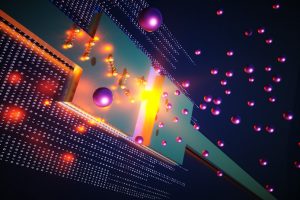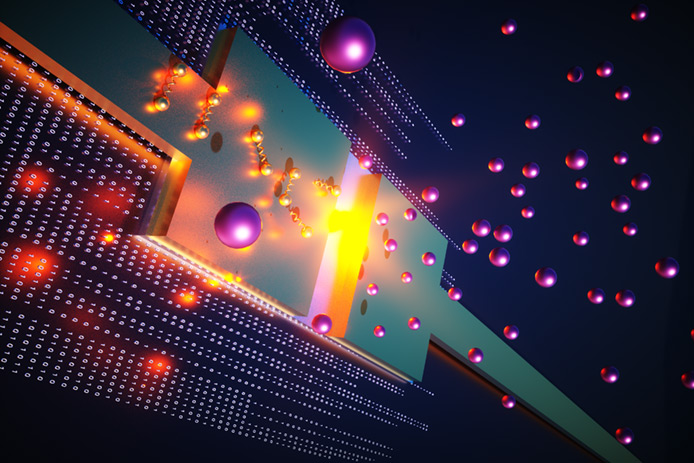
Scientists at Raytheon BBN Technologies have reported a new way to detect a single photon, or particle of light – a development with big applications for sensors, communications and exponentially more powerful quantum computer processors, according to a company news release and published scientific paper.
The team has published its work, which centers on the use of a component called a Josephson junction, in the academic journal Science. The discovery builds on the same team’s previous research into a microwave radiation detector 100,000 times more sensitive than existing systems.
“A Josephson junction in quantum computing is analogous to a transistor for modern electronics, so they are super important,” said Kin Chung Fong, a quantum information processing scientist at Raytheon BBN Technologies and a research associate at Harvard University. “Our new device enables this basic unit in quantum computing to communicate through as little as one photon. It will improve the speed in the communication and can make quantum networking and sensing possible.”
Researchers and labs around the world have started building larger quantum computers, seeking to unlock the promise of faster processing.

“In theory quantum computers can take over where traditional computers would run out of processing power,” said Brad Tousley, president of Raytheon BBN Technologies. “Quantum computers are particularly good at solving critical optimization problems. One example would be for a computer-aided design of a large system like an aircraft. Quantum computing allows for more finite analysis of something like a wing shape than ever before. Fundamental everyday processing optimization is the first problem we’d like to tackle with quantum computing.”
The technical limitation has been the background noise that causes qubits to lose memory, creating errors in the processing. While other researchers see the noise as problem, Fong and his team see opportunity.
Their method works a little like a highway, where superconducting charges play the role of cars. In principle, they can move very fast without bumping into each other. Background noise is like a broken-down car in the center lane – it breaks the flow of traffic.
“The interruption could destroy the data in quantum computing applications,” Fong said. “However, we can utilize this same phenomenon to detect a single photon, allowing the traffic to continue to speed along.”
The discovery is part of a research effort at Raytheon BBN Technologies, a subsidiary of Raytheon Intelligence & Space. Raytheon BBN has been providing advanced technology research and development for more than 70 years, often serving as a crucial link between the military and researchers at universities. As an example, it was one of the first nodes in the ARPANET, the precursor of the internet funded by the Defense Advanced Research Projects Agency, or DARPA. Scientists at Raytheon BBN work in broad-reaching portfolios, while quantum engineering and computing continues to show promise for next-generation capabilities.
“This discovery is going to open up quantum processors to be connected like never before,” Tousley said. “The next step is characterizing performance and scaling up to more than one device in parallel or linking multiple devices.”
The Raytheon BBN team believe they have the systems engineering expertise to take this basic research to more practical applications.
“We’ve filled a technological void with the first Josephson junction to detect a single photon,” said Fong. “It’s an enabling technology for networking, communication and computation. We are really just scratching the surface.”
If you found this article to be informative, you can explore more current quantum news here, exclusives, interviews, and podcasts.

















